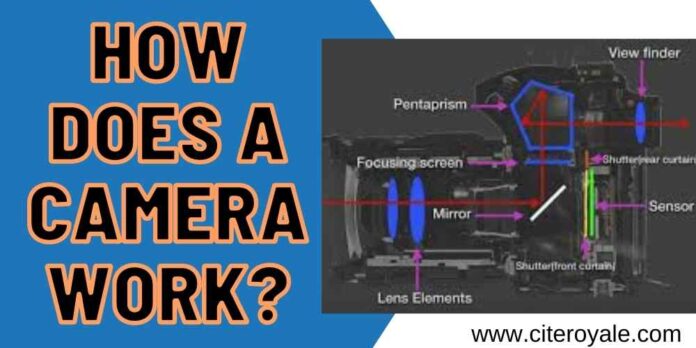At some point in our life, all of us may have held and used a camera. We may have taken several breathtaking images using our camera and even made a few bucks by selling these images. But how many of us have wondered about how does a camera work? Well if you are among the handful of few, then be proud of yourself. This means that you not only do things but are also willing to learn about them. In this article, we’ll see how does a camera work and what are its components.
Importance of light
Before getting to know the working of a camera it is very important to understand the role of light in photography. Without light, photography is incomplete. So it is crucial to know a few things regarding light. We have learned right from our school days that light always travels in a straight path. However, it can be subject to reflection and absorption. Light has dual nature – it behaves as a particle as well as a wave. For all cameras and our eyes, light acts as a wave. The amount of light absorbed and reflected by an object determines how it appears visually. Each individual who is engaged in photography has to use this light in creative ways.
Understanding the basics of a camera
Every object around us is bathed in light and they reflect light as well. A camera is essentially made up of two main parts, a lens, and a sensor. The lens collects all the light coming from the objects and with the help of glass, it focuses them on a single point. This results in the creation of a sharp image. However, the image is inverted in nature. This is why a mirror is used in a camera to see the real image as it appears to our eyes. Also, the light from this mirror is then focused on the sensor in the camera. This is the basic principle of working of a camera. Let us now see in detail how a camera works.
Parts of a camera and its functions
There are four important parts of a camera, namely the lens, the sensor, the shutter, and the viewfinder. Apart from these some cameras also have additional parts such as the pentaprism and screen.
Lens
Light first makes contact with the lens of a camera. The modern camera lens is not a single lens but is a complex structure made up of several lenses. The basic function of the camera lens is to collect the ambient light. Every lens has an optical formula that results in the formation of an image on the sensor.
All camera lenses have a typical focal length. The focal length is nothing but the distance between the point at which the lens converges light and the sensor of the camera. This focal length can be adjusted manually or automatically.
At the front of every lens, you’ll find a small hole or aperture through which light enters the lens. The size of this aperture controls the amount of light entering the lens and hitting the sensor. Each lens aperture has openings whose size is measured in terms of F-stop, for example, an F2.8 aperture. The F-stop value is the ratio of the focal length to the diameter of the lens.
Shutter
While it is true that the light enters the camera through the lens, it doesn’t end up on the sensor directly. There is something known as a ‘shutter’ in between the lens and the sensor. It blocks the incoming light from the lens. The light falls on the sensor only when the user presses the shutter button. When this happens, the shutter opens up the path for light to fall on the sensor. The duration for which the shutter allows the light to be incident on the sensor is called shutter speed. Shutter speed is generally measured in seconds or fractions of a second. For example, a 1/30 shutter speed implies the shutter will be open for one 30th of a second.
Sensor
After the lens, the sensor is the second most important part of a camera. The light focused by the lens is incident on the sensor. This incoming light from the lens is trapped by the sensor in its tiny elements called photosites or pixels. Pixels are nothing but tiny elements that convert the light into electric currents. These pixels constitute each image and the more the number of pixels, the better the image quality. The size of the sensor is directly related to the quality of the final image. Large sensors have large areas which mean they have more pixels and can give high-quality images. Also, more pixels mean better color reproduction.
Viewfinder
Most modern cameras have a viewfinder sitting on the top at the eye-level. A viewfinder is the most neglected and undermined part of any camera. The main function of a viewfinder is to indicate to the user what is being photographed. It shows how much area of scenery will appear in a photograph. In modern cameras, the light focused by the lens falls on a mirror. The mirror reflects the light on a pentaprism and then directs it towards the viewfinder. Thus, we can see what we are going to capture in an image.
With this, you now possess the basic knowledge of how a camera works. It can be utilized in your professional photography career or even in normal life. With advancements in technology each day, the camera sees a lot of upgrades. However, the basic parts always remain the same.







